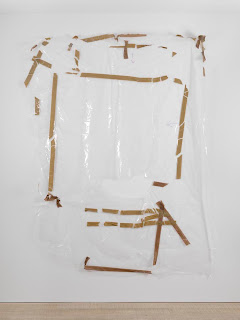In this reading there are three different writings about different ideas to do with the everyday and architecture.
First Writing: Sarah Wigglesworth and Jeremy Till- The Everyday and Architecture.
"Aspects of the world overlooked or suppressed by high architecture are thus allowed to flourish in a manner which captures the redemptive and creative potential of any act of making." pg. 7.
With this writing it opens up my mind to think about the everyday and how it influences our experiences based on materials and architecture.
I'm interested in using everyday materials but changing them individually and as a group, cohesive, crisp and having a constant rhythm between each piece.
Second Writing: Phillip Hall-Patch- Breacking the Veil.
"- a material architecture of engagement and experience. In this context, the overriding concern must be that of time and/or ability to place materials and processes of construction within a time-frame: to read a building as one might read a palimpsest where the memory of previous construction and embodiments (although indistinct) have left their trace; traces which the weathering effects of time itself may be allowed to magnify or conceal, but which may never be erased." pg. 37.
This interest in traces has been very strong during the process of my practice. I react to the marks left from my last work and create a conversation between the old and the new.
I'm also interested in the marks already made on the object i've collected. Not erasing them but adding to them and reacting to their colour, shape and texture.
Third Writing: Asmund Thorkildsen- Turning the Commonplace, sure... (A Potic Appreciation of Jessica Stockholder's Art).
"Jessica Stockholder's installations. One is taken by the unexpectedness of the obvious. The common objects she uses as building materials are woven into full-scale, three dimentional installations that invite direct participation. One moves easily in them; they offer suprises, shifts, obstacles." pg. 53.
I like the way Stockholder uses everyday materials and recreates them so they offer a new shift that evolves the participation between the art and the spectator.
She makes statements between the materials she uses and the setting she places them in. There's a constant conversation between all elements in her work.




























